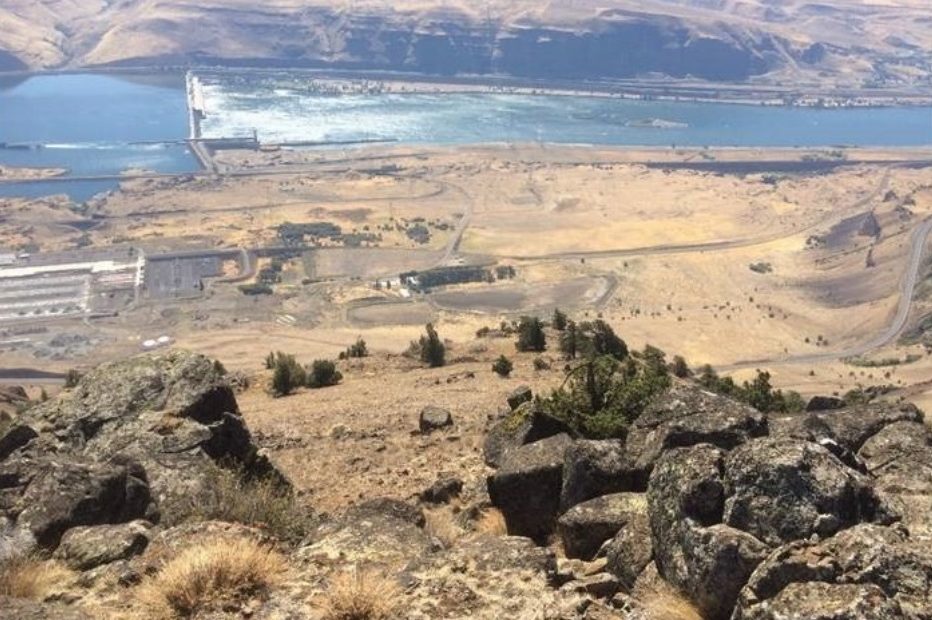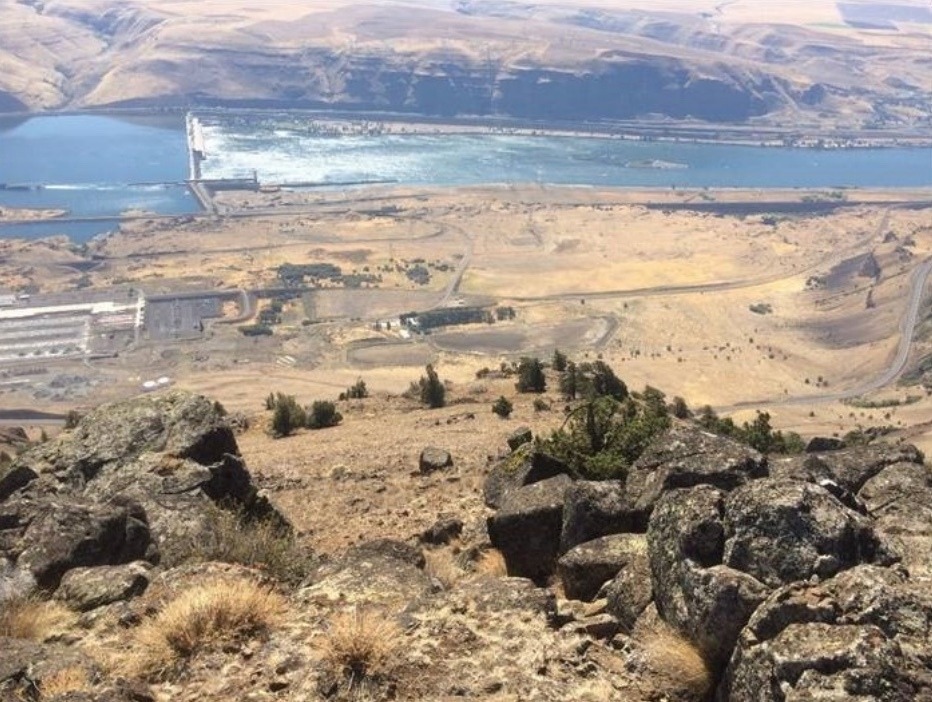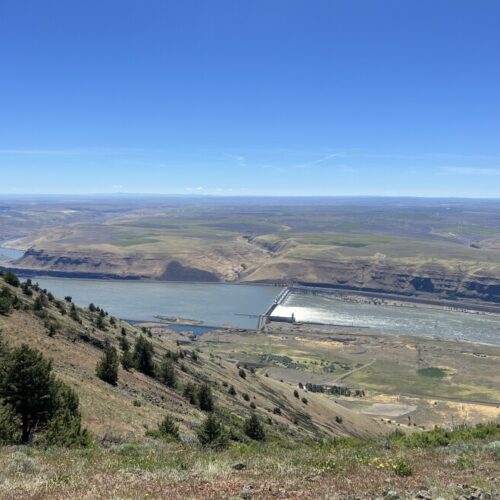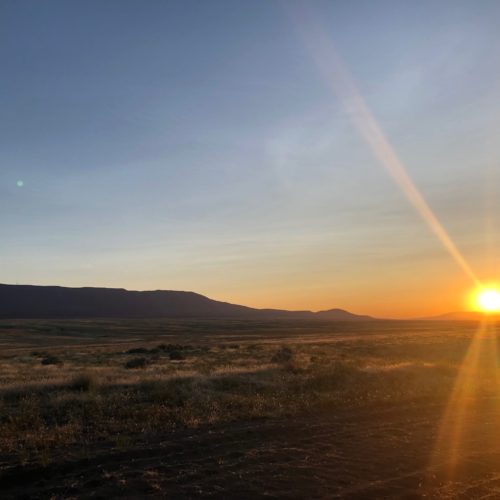
Washington Denies Permit For Goldendale Pumped Hydro Project, But It’s Not The End Of The Road

READ ON
A large energy storage project in Washington will have to reapply for important water quality certifications. The state recently denied the certification because officials didn’t have enough information about the Goldendale Energy Storage Project.
“This is in no way a denial of the project. We’re going to keep working with the company,” said Department of Ecology spokesperson Colleen Keltz.
The denial was issued without prejudice, meaning developers can reapply for the certification. The project can’t be built without it.
The Goldendale Energy Storage Project would be the largest pumped hydro project in the Northwest, a giant battery that could supplement renewable energy projects. It would consist of two 60-acre reservoirs, one up high on a cliff in the Columbia Hills, another down below.
When there is extra energy on the grid, water would be pumped from the lower reservoir to the upper reservoir. Then, when the sun isn’t shining or the wind isn’t blowing, water would tumble through an underground tunnel and turbines into the lower pool to generate energy. The water would be recirculated between the two pools.
As a part of its federal licensing process, the project also had to be granted a water quality certification from the state. Separately, the Department of Ecology is conducting an environmental impact review, which is expected to be completed by mid-2022.
The state had to issue a decision on the water quality certification this month, a year after the company initially applied for the certification.
As of now, the department says it still has questions about whether the project would meet state water quality standards.
Questions remain about how the project will mitigate the loss of stream and riparian habitat in wetlands and other ephemeral streams.
The lower pool would be built on a part of an old aluminum smelter, now a cleanup site. Ecology wanted to know the depth of the lower reservoir. The concern is that it could be deep enough to reach a contaminated plume that’s already in the groundwater from the former smelter.
“Really, the (water quality certification) process should just be happening later (in the licensing process). We need to have more of this information in,” Keltz said. “There are a lot of steps along the way, and the 401 certification needs to happen later, once a lot more studies and reports have been done.”
The company can reapply once they have answered Ecology’s questions, Keltz said. It can also appeal the decision to the state’s Pollution Control Hearings Board within 30 days.
The Goldendale Energy Storage Project has been purchased by Copenhagen Infrastructure Partners, which will take over once construction begins. Right now, Rye Development is heading up project development.
In an email to NWPB, Rye Development’s Erik Steimle said this most recent decision by Ecology was procedural and “doesn’t interfere with the development timeline of the Goldendale Energy Storage Project, a cornerstone of both Washington’s and the broader Pacific Northwest’s clean energy economy.”
The project has faced pushback from regional tribes and several environmental groups. The Yakama Nation says it would be built upon a sacred site and could knock out land where they could collect roots and medicines.
“This whole area is really sacred from the bottom all the way to the top (reservoirs), where they want to build this pump storage (project),” Elaine Harvey told NWPB in a previous interview. Harvey is a Ka-milt-pah member, known in English as the Rock Creek Band of the Yakama Nation.
Environmental groups have included those worries in their list of concerns. Simone Anter, with Columbia Riverkeeper, says the group also worries the project could destroy wetlands and streams and could be harmful to wildlife such as golden and bald eagles.
“With this specific project we’ve seen these disastrous impacts that will happen to Tribal cultural resources, and so to call this a responsible, green project for our future to combat climate change, is just false,” Anter said.
Gov. Jay Inslee has voiced support for the Goldendale Pumped Storage Project. He visited the site in 2019, also meeting with the local chamber of commerce, public utility district and renewable energy experts looking for ways to store renewable power. It’s often heralded as a way to help transition to clean energy and meet Washington’s renewable energy goals.
In 2020, Inslee signed a bill declaring it a project of “statewide significance” and allowing for expedited permitting. The Federal Energy Regulatory Commission recently denied the company’s request for an expedited licensing process, citing the need for additional information.
Steimle, with Rye Development, says the project is on track to be up and running commercially by 2028.
Related Stories:

Controversial energy project moves closer to breaking ground
A view from the edge of the cliff where the Goldendale Energy Storage Project could be built. An underground tunnel would carry water from a upper reservoir to a reservoir

Federal regulators want public input on Goldendale Energy Storage Project
A view from the edge of the cliff where the Goldendale Energy Storage Project could be built. An underground tunnel would carry water from a upper reservoir to a reservoir

‘It’s Irreversible’: Goldendale Green Energy Project Highlights A History Of Native Dispossession
The Goldendale Energy Storage Project would be a solution to generate energy when the sun isn’t shining or the wind isn’t blowing. But, to the Yakama Nation, the destruction of those sites would add another heartbreak to an ever-expanding list. Countless important cultural areas have faced destruction across the Northwest, largely because they’re not understood by non-tribal members.















